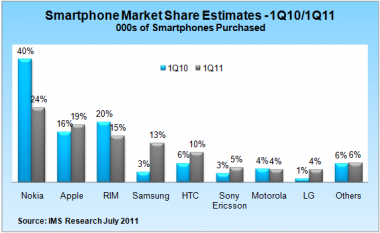US Army Armed Smartphone & Tablet PC
Smatphone For Army
The U.S. Army is currently undergoing a six-week program to test the resilience of the use of touch screen phones and tablets in battle. This pilot program began June 6 at White Sands and Fort Bliss training area in New Mexico and Texas.
Dry training has proved very encouraging and officials of US Army expect the first wave of soldiers equipped smartphones can be sent overseas later this year. Several members of the brigade was assigned to the tactical radio.
This device will not replace the radio but will be distributed more widely and ideally would operate alongside the older equipment, officials said. Infantry using smartphones to update text messages about the environment, send pictures with GPS locations, dragging the map, and quickly create reports.
“When the officer in trouble to reporting, they could return to the text,” said Army director of that program , Michael McCarthy. The young soldier grew up with this technology and they are familiar with it, he added.
Camera phones and GPS systems on the image which is also called ‘augmented reality’ is also in development, officials said. In the trial, are soldiers collectively evaluated more than 300 Android, iPhone and Windows Phone, McCarthy said. In addition, they also carry a tablet Apple, Dell and Hewlett-Packard, he added.
Separately, another division of US army test special Android phone prototype device called the Joint Battle Command-Platform Handheld. “We take into account a variety of devices and all mobile phones that have tested the results are pretty good,” McCarthy said.
Still, he acknowledges some devices are proven problematic. One of the popular mobile phones from Samsung Electronics failed to connect the mobile network and has a bug in the operating system (OS) Android, said McCarthy.
Will Try Using Two Operation System In One Device
Initially, the army is have a problems while testing the iPhone in the desert. “AT & T does not provide service there,” said McCarthy. Then, the iPhone and Android could work very well, said army director accompanist program mobile devices Ed Mazzanti .
Mazzanti hope, the army will use two OS for official use. That way, the needs of software development can be minimized and can withstand cyber attacks targeted at specific types of OS. Army software engineers to develop a way so the application could use in the two platforms, officials said.
Other applications are being coded as an optimized Web pages, he said. Google spokesman declined to comment on individual transactions with the organization of this company. Apple spokeswoman did the same.
Devices glass, metal and plastic is quite staggering, according to the army after the test. This device is already facing harsh conditions of a sandstorm, said McCarthy. US army can operate the touch-screen devices using special characters.
Invest In Research In Production More Economical
Do not expect sergeants would carry a basket full of electronic goods out of the store. Army officials say they do not buy commercially available technology but rather invests in research and production that is clearly more economical.
“It’s much cheaper than developing its own,” said McCarthy. Many products sold at Best Buy is more advanced than the tools that already exist in army. A smartphone is not a phone, Mazzanti said.
“It’s computers, display units, video-out unit. Because computer-based utilities in seven-ounce package, we began to realize there are a number of great potential, “he said. But the barriers are, these devices could be used to attack the troops because the software and the transmission is not entirely safe.
“Currently, we do not have the level of encryption that can bring this smartphone out of the country and fully integrate it within the mission of the command system,” Mazzanti said. However, there may be some limited spread of this year related to tactical radios that provide the required encryption.
Concurrent testing of smartphones and tablets, the army also testing equipment that allows operators to use emergency network. ‘Tower in a suitcase’ which is able to create a wireless network is limited to be used when the existing services can not be relied upon or the possibility of attracting unwanted listeners. – US Army



 I get a
I get a  I'm hoping I'm just not doing something correct and others have been successful in being able to see their Droid contacts on their Garmin devices. Any luck out there and if so which model are you using (did see where one guy had a non Nuvi working)?
I'm hoping I'm just not doing something correct and others have been successful in being able to see their Droid contacts on their Garmin devices. Any luck out there and if so which model are you using (did see where one guy had a non Nuvi working)?